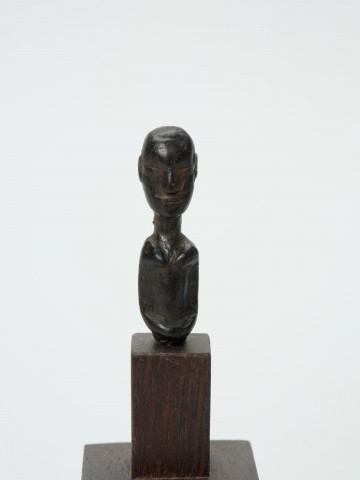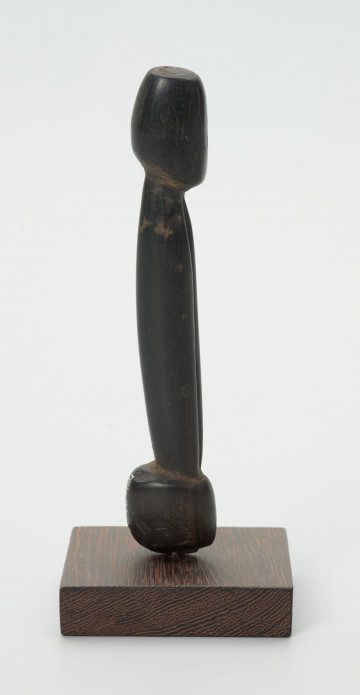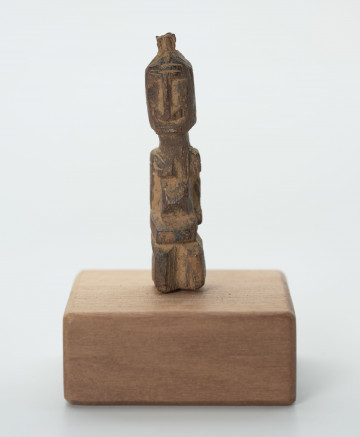
Fetish
między 1951 — 2000
National Museum in Szczecin
Part of the collection: Collection of Dogonian art
In traditional African cultures, the concept of property is very complex and varied. The personal fetish is an example of individual material property. In the Dogon it is possible to distinguish between tangible property of a utilitarian nature and intangible, symbolic property, such as songs or incantations. There is also a division of property according to the type of owner. Undoubtedly, we can mention private property (individual, personal) most often stored in granaries and residential buildings. More important, however, seems to be family property (collective, group), which is managed by ginna bana, and communal property, to which the whole community is entitled. The Dogon also have ancestral property, which the living generation only manages (but does not own) and is obliged to pass on to the next generation. This type of property mainly concerns land and religious objects. One of the most significant objects of ownership is land, understood as a place of residence, but also as cultivated land, pastures or hunting grounds. Its use is regulated by traditional law and custom. Traditionally, land is owned by the ancestors of a lineage or large family and cannot be sold. It is entrusted to a small family only for temporary cultivation. All cultivated fields belonging to a family or lineage are arranged in a spiral shape. It is customary to place the best, most fertile plots in the centre of the spiral. Young spouses are given plots of land far from the centre, but over the years ginna bana (a family patriarch) allocates to them increasingly better situated plots of land. This system of temporary allocation of land for cultivation to individual families leads to the situation that the oldest members of the families or lineages cultivate the best fields, located closest to the villages.
Ewa Prądzyńska
Author / creator
Dimensions
cały obiekt: height: 15,1 cm, width: 2,5 cm
Object type
figure
Creation time / dating
Creation / finding place
Identification number
Location / status

między 1951 — 2000
National Museum in Szczecin

między 1951 — 2000
National Museum in Szczecin

między 1951 — 2000
National Museum in Szczecin
DISCOVER this TOPIC
Castle Museum in Łańcut
DISCOVER this PATH
Educational path